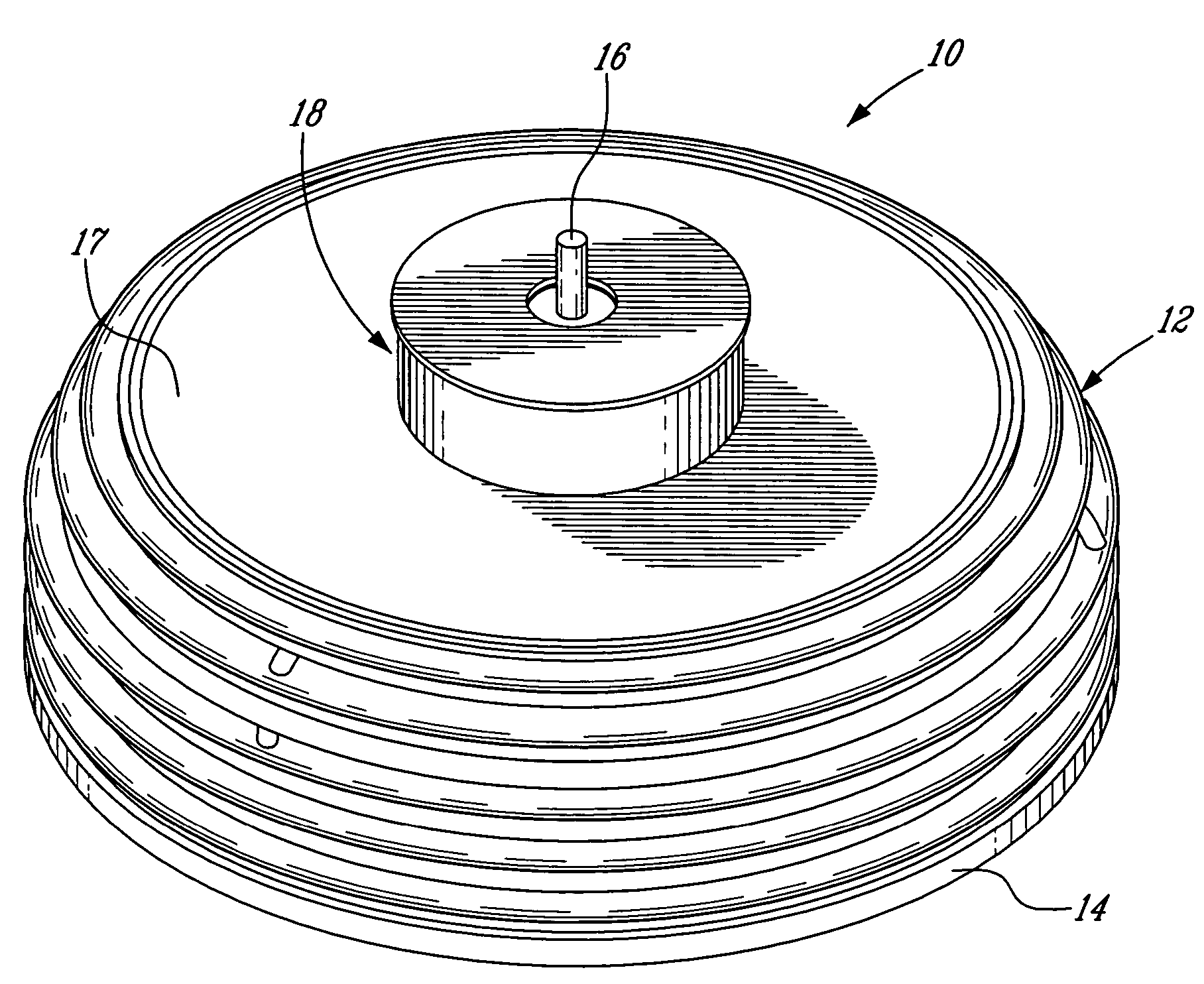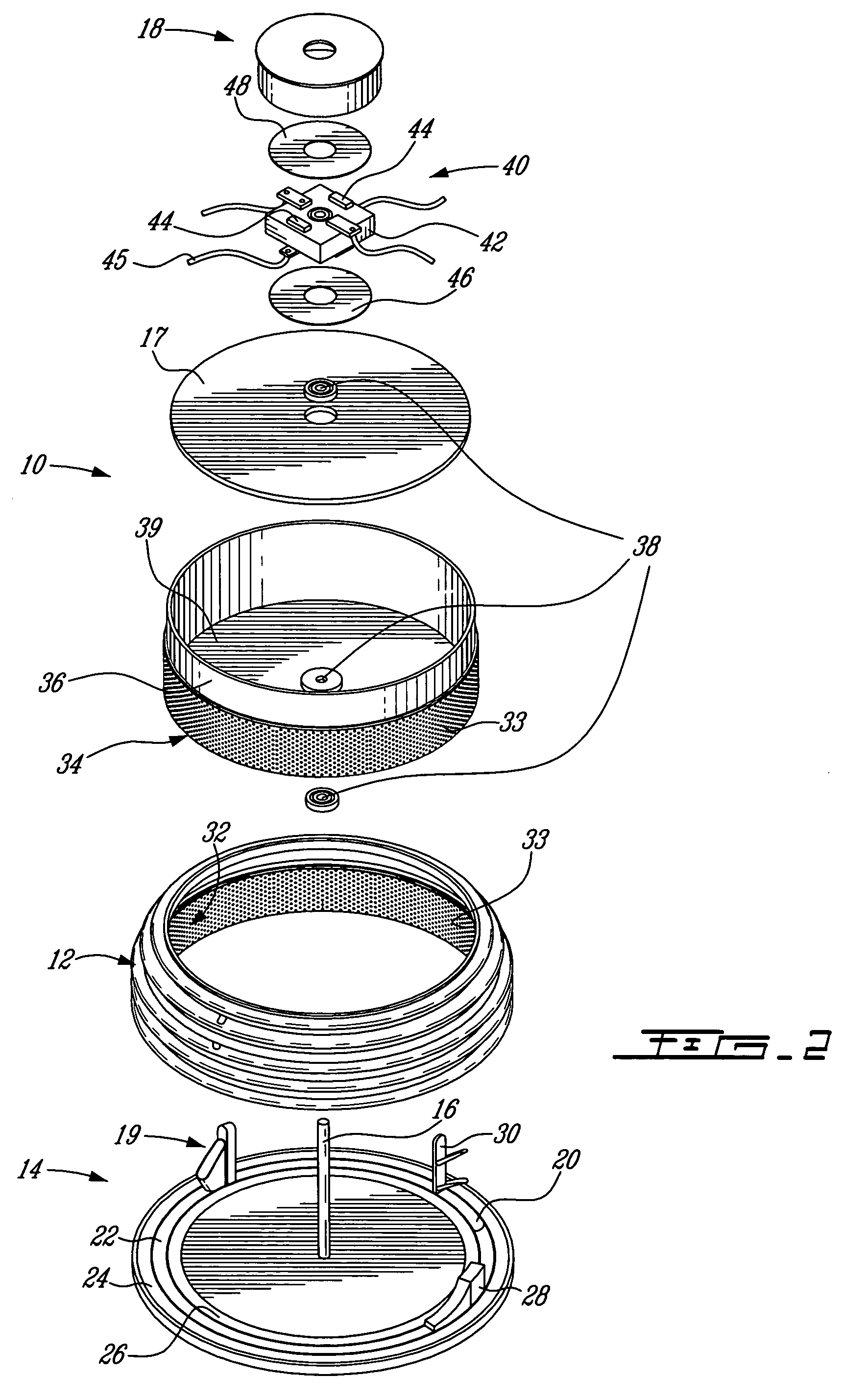Process and apparatus for treating sludge
a technology of sludge and processing equipment, applied in the field of sludge treatment, can solve the problems of electro-osmosis techniques, potential drop at the anode, etc., and achieve the effects of reducing potential drop, high dryness, and optimizing treatmen
- Summary
- Abstract
- Description
- Claims
- Application Information
AI Technical Summary
Benefits of technology
Problems solved by technology
Method used
Image
Examples
example 1
[0098]A municipal waste sludge has been treated as indicated above and then analyzed. The results are shown in Tables 1 and 2.
[0099]
TABLE 1UntreatedTreatedAbatement ratePollutantsUnitssludgesludge(%)fecal coliformsNPP / gbs>9600099.99salmonellaeNPP / 4 gbs1070
[0100]
TABLE 2SludgePhDryness (%)Humidity (%)Untreated sludge7.1016.6083.36Treated sludge5.7037.0063.02
example 2
[0101]Another municipal waste sludge has been treated as indicated above and then analyzed. The results are shown in Tables 3 and 4.
[0102]
TABLE 3UntreatedTreatedAbatement ratePollutantsUnitssludgesludge(%)fecal coliformsNPP / gbs1100099.99salmonellaeNPP / 4 gbs1.776
[0103]
TABLE 4SludgePhDryness (%)Humidity (%)Untreated sludge6.5114.0086.00Treated sludge5.4741.0059.00
[0104]As it can be seen form Tables 1 and 3, the processes and apparatuses of the invention can provide a bactericide effect to the treated sludge, thereby decontaminating the sludge from these pollutants.
example 3
[0105]A further municipal waste sludge has been treated as indicated above and then analyzed. The results are shown in Tables 5 to 7. In Table 5 the results of a single cell are shown. In Table 6, the results for two cells are shown. Finally, in Table 7, the results for 36 cells are shown.
[0106]
TABLE 5VoltageCurrentDrynessDryness(average)(average)(initial)(final)Tests(V)(A)(%)(%)Test 133.0027.4814.2039.50Test 237.9472.3613.3240.97
[0107]
TABLE 6VoltageCurrentDrynessDryness(average)(average)(initial)(final)Tests(V)(A)(%)(%)Test 1331861st cell12.4033.672nd cell12.4034.69Test 2332001st cell12.3237.212nd cell12.3235.00
[0108]
TABLE 7VoltageCurrentDrynessDryness(average)(average)(initial)(final)(V)(A)(%)(%)301995.651634
[0109]The processes and apparatus of the invention can be useful for treating organic and / or inorganic sludge such as colloidal sludge, sludge from pulp and paper industries, sludge issued from a chemical or biological treatment, sludge from a dairy, sludge from a slaughterhou...
PUM
| Property | Measurement | Unit |
|---|---|---|
| temperature | aaaaa | aaaaa |
| temperature | aaaaa | aaaaa |
| thickness | aaaaa | aaaaa |
Abstract
Description
Claims
Application Information
 Login to View More
Login to View More - R&D
- Intellectual Property
- Life Sciences
- Materials
- Tech Scout
- Unparalleled Data Quality
- Higher Quality Content
- 60% Fewer Hallucinations
Browse by: Latest US Patents, China's latest patents, Technical Efficacy Thesaurus, Application Domain, Technology Topic, Popular Technical Reports.
© 2025 PatSnap. All rights reserved.Legal|Privacy policy|Modern Slavery Act Transparency Statement|Sitemap|About US| Contact US: help@patsnap.com



